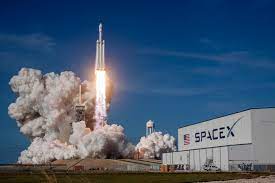SpaceX, an aerospace corporation created by Elon Musk, successfully conducted the first test launch of its Starship rocket today. Starship is the largest and most powerful rocket in the history of rocketry, and it was designed expressly to take freight and people beyond Earth to Mars.
The rocket attained its maximum speed of about 2,000 kilometers per hour while reaching its maximum altitude of 39 kilometers. However, approximately four minutes into the flight, the rocket experienced a violent explosion and was unable to make it to its intended location.
According to the corporation, the Mars-bound Starship that was intended to lift up into space had undergone a “rapid unscheduled disassembly” during the ascent. This prevented the ship from entering space. There were no personnel aboard the ship.
After the initial attempt to get this launch off the ground on Monday, the business decided to postpone it because of a “pressurization issue.” Since then, the company’s teams have been hard at work resolving a number of issues that remain unknown in order to make a second try conceivable today, on Thursday.
Read also: SpaceX and T-Mobile to provide satellite connectivity for smartphones
The launch did not go as planned, but the liftoff is still an important milestone for SpaceX. The company has repeatedly emphasized the experimental nature of the launch and stated that any result that saw Starship get off the launchpad would be considered a success. Despite the fact that the launch did not go as planned, the liftoff is still a significant milestone for SpaceX.
The company tweeted, “With a test like this, success comes from what we learn, and today’s test will help us improve Starship’s reliability as SpaceX seeks to make life multi-planetary.” In a tweet, Elon Musk complimented the SpaceX team and dropped hints that the company’s next test launch would take place in the next few months.
The Explosion of SpaceX Starship causes particulate matter to spread for miles
Residents and researchers are working feverishly to determine how the explosion would affect the local communities, their health, their ecosystem, and the wildlife that lives there, including endangered species.
The significant quantity of sand- and ash-like particulate matter as well as heavier debris that was kicked up by the launch is the key cause for concern. The area affected by the particulate emissions was far larger than the projected debris field.
In light of the explosion, the Federal Aviation Administration (FAA) has halted the Starship Super Heavy launch programme of the corporation until the results of a “mishap investigation,” which is routine procedure, according to an email that the agency issued to CNBC following the launch. As of the 21st of April 2023, the agency had not received any reports of damages or injuries to public property or individuals.
Impact of the Explosion
The Centre for Biological Diversity is concerned about the effects of the noise, particulate matter, and heavier debris on endangered species that make their home in the area. These species include the piping plover, red knot, jaguarundi, ocelot populations, and sea turtles. The Kemp’s Ridley is one of the world’s most critically endangered sea turtle, and it nests on the beaches of Boca Chica.
The Kemp’s Ridley turtle nests from the months of February all the way through June.
He emphasised that the land that is designated as vital habitat for the piping plover is located within National Wildlife Refuges, which are extremely close to the launch pad.
Cortez added that members of the Sierra Club have been particularly concerned about the effects on human health and how the aftermath of the explosion may limit people’s ability to spend time outside, whether it be to go fishing for their dinner, to enjoy the beach, or to go hiking in one of the many parks and protected wildlife areas that are close to Starbase.
It won’t be possible to comprehend the effects of the particulate emissions produced by the SpaceX launch until samples are analysed and detailed measurements of the debris field are taken.
However, in most cases, particle emissions are controlled by the Clean Air Act on the federal level as well as by state legislation in Texas.
According to Eric Roesch, an environmental engineer who monitors the impact of SpaceX facilities and launches on his blog ESGHound, particle emissions are linked to pulmonary and respiratory problems and are regarded as a high priority contaminant by the Environmental Protection Agency (EPA).
The effects on one’s health are contingent on the length of exposure and the amount of exposure, in addition to the particle size and the constituents of the particulate.




